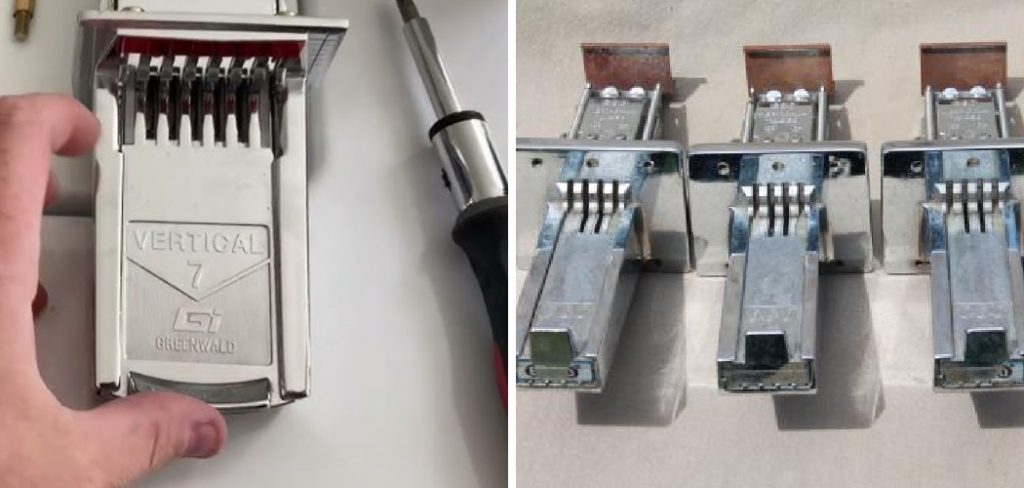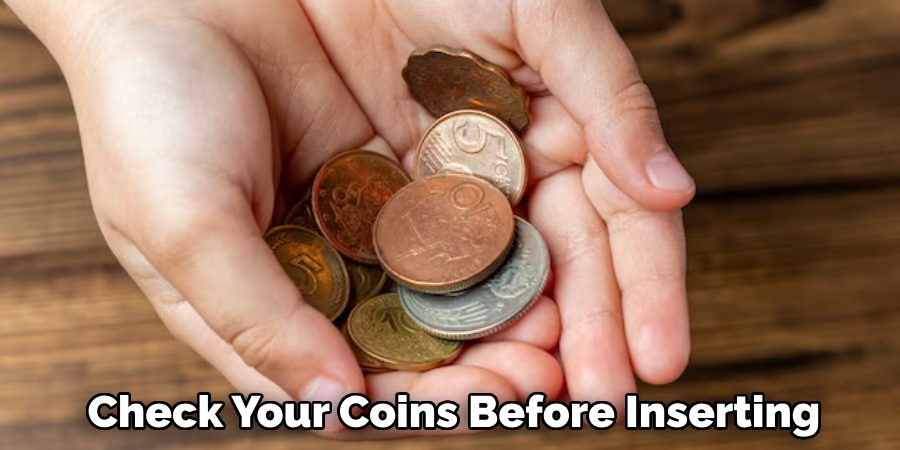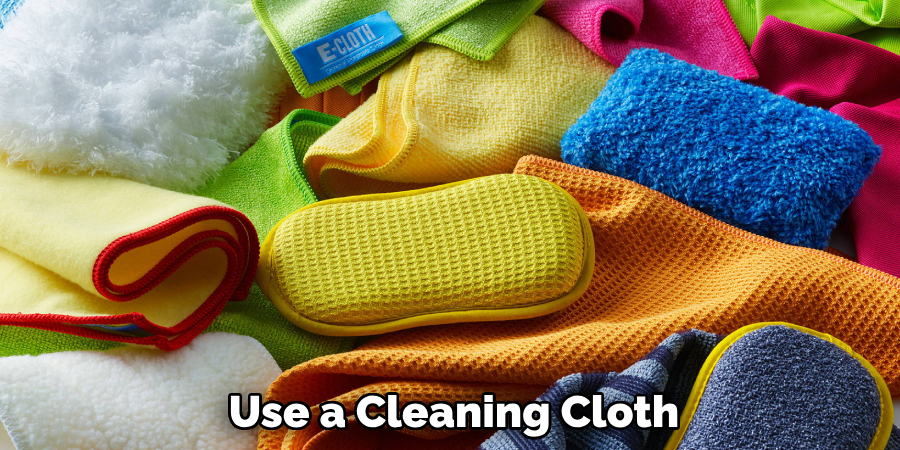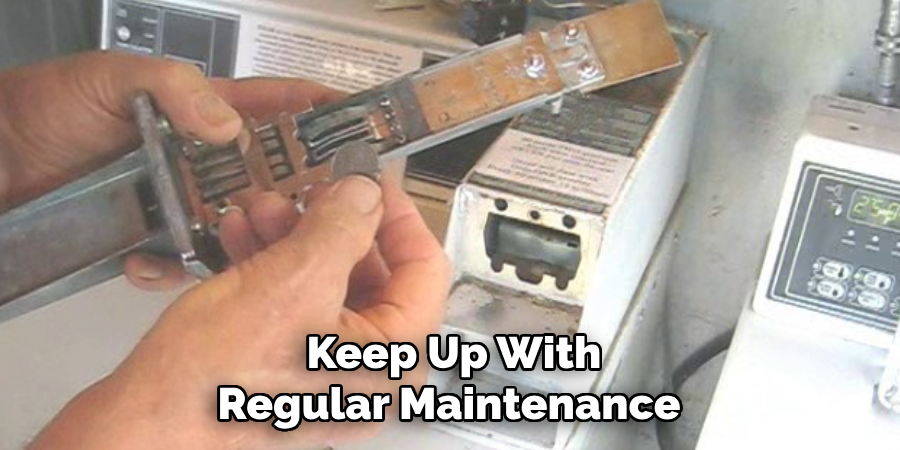A jammed coin slide can be a frustrating experience, especially when you are in urgent need of completing a laundry task. Coin slides are common in many shared laundry facilities and vending machines, and their jamming is often due to accumulated debris, bent coins, or general wear and tear. Fortunately, with a few simple tools and some patience, most jams can be resolved without the need for professional assistance.

This guide on how to fix a jammed coin slide will walk you through the steps necessary to fix a jammed coin slide, ensuring your machines are back in working order quickly and efficiently.
What is a Coin Slide?
A coin slide is a mechanism commonly found in vending machines and shared laundry facilities that allow for the insertion of coins or tokens to activate a service or product. The coin slide typically consists of a slot where the coins are inserted, followed by an angled plate that directs the coins into their designated location. A spring-loaded lever then presses against the coins, keeping them in place until they are released.
It is essential to keep the coin slide clean and free of debris to prevent jams from occurring. Regular maintenance and inspection can also help identify any potential issues before they become major problems.
Why Do Coin Slides Get Jammed?
There are a few common reasons why a coin slide may become jammed, including:
Accumulated Debris
Over time, coins can collect dirt, lint, and other debris when inserted into the slot. This debris can build up and create a barrier between the coins and the mechanism, preventing them from moving smoothly.
Bent Coins
Coins that are bent or damaged may not fit properly into the coin slide, causing it to jam. It is essential to check your coins before inserting them into the machine to ensure they are in good condition.
Wear and Tear
As with any mechanical device, regular use can cause wear and tear on the coin slide, leading to potential jams. It is crucial to regularly inspect and maintain your coin slides to prevent this issue.

8 Step-by-step Guides on How to Fix a Jammed Coin Slide
Step 1: Gather Your Tools
Before attempting to fix a jammed coin slide, make sure you have all the necessary tools on hand. These may include:
- Pliers
- Screwdriver (Flathead or Phillips)
- Can of Compressed Air
- Cleaning Cloth
Step 2: Identify the Jammed Area
Start by carefully examining the coin slide to locate the specific area where the jam has occurred. Ensure the machine is turned off or unplugged for safety. Look for visible signs of obstruction, such as bent coins or foreign debris caught in the slot or along the track.
Use a flashlight if needed to inspect hard-to-see areas. Identifying the exact location of the jam will streamline the process of clearing it and prevent further damage to the mechanism during repair. It may also help determine the cause of the jam, making it easier to prevent in the future.
Step 3: Remove Obstructions
Once you have identified the specific area where the jam has occurred, it’s time to carefully remove any obstructions. Use a pair of pliers to gently extract any bent coins or debris lodged in the slide or blocking the path of the coins. Be careful not to apply too much pressure, as this can damage the coin slide mechanism.
For smaller debris that cannot be easily removed with pliers, try using a can of compressed air to blow it out. Spray the compressed air in short bursts to dislodge dust or particles without causing harm to the components. After clearing the obstructions, visually inspect the slide to ensure all foreign material has been removed before proceeding to the next step.
Step 4: Clean the Coin Slot
Once all visible obstructions have been removed, use a cleaning cloth dampened with alcohol to wipe down the coin slot and remove any remaining dirt or grime. This step is crucial in preventing future jams caused by accumulated debris.

You may also use a brush or toothpick to dislodge any stubborn dirt or buildup in hard-to-reach areas of the coin slot. Once cleaned, allow some time for the area to dry completely before attempting to use the coin slide again.
Step 5: Check for Loose Screws
A jammed coin slide can sometimes be caused by loose screws that have come undone due to regular use. Carefully inspect the slide’s components and tighten any visible screws with a screwdriver if needed. This step will help ensure the smooth operation of the coin slide and prevent future jams.
It is essential to be gentle when tightening the screws, as over-tightening can cause damage to the mechanism. The screws should be snug but not overly tight.
Step 6: Lubricate Moving Parts
After cleaning and tightening, it is crucial to lubricate all moving parts of the coin slide to ensure smooth operation. Use a light lubricant, such as silicone spray or WD-40, and apply it sparingly to any areas that may require lubrication, such as the spring-loaded lever or angled plate.
Be careful not to over-lubricate, as this can attract dirt and debris, leading to future jams. Also, avoid using heavy oils or grease as they can cause build-up and make the mechanism stickier over time.
Step 7: Test the Coin Slide
With all obstructions cleared and components cleaned and lubricated, it’s time to test the coin slide. Insert a few coins into the slot and observe their movement through the mechanism. The coins should slide smoothly into their designated location without any obstructions or jams.
If the coins still get stuck, repeat steps 2-6 to ensure all debris and loose screws have been removed and the mechanism is adequately lubricated. If the problem persists, it may be necessary to call a professional for further assistance.
Step 8: Keep Up with Regular Maintenance
To prevent future jams from occurring, it’s crucial to keep up with regular maintenance of your coin slides. Clean them regularly and inspect for any potential issues that may arise. By staying on top of maintenance, you can avoid costly repairs and downtime in the long run.

Following these steps on how to fix a jammed coin slide can help you fix a jammed coin slide quickly and efficiently. Remember to always prioritize safety when working with any mechanical device, and consult a professional if needed for more complex issues. Regular maintenance is key to keeping your coin slides in top working condition, so make it a part of your routine cleaning schedule.
Do You Need to Get Help From a Professional?
While many jammed coin slide issues can be resolved with the step-by-step guide provided, there are circumstances where professional assistance may be necessary. If you encounter a recurring problem despite following all steps, or if the mechanism appears to suffer from significant wear or damage, it might be wise to consult an expert.
Professional technicians possess specialized tools and expertise to diagnose and repair intricate mechanical issues that might not be apparent to the untrained eye. Additionally, if you lack the confidence or tools to carry out the repairs safely, seeking professional help can prevent further damage to the machine and ensure a reliable solution. In the long run, professional maintenance might save you from costly replacements or more extensive repairs.
Frequently Asked Questions
Q1: What Kind of Lubricant Should I Use on My Coin Slide?
A: It is recommended to use a light lubricant, such as silicone spray or WD-40, sparingly on the moving parts of the coin slide. Avoid using heavy oils or grease as they can cause build-up and make the mechanism stickier over time.
Q2: Can I Use Water to Clean My Coin Slot?
A: No, it is not recommended to use water to clean your coin slot. Instead, use a cloth dampened with alcohol or a specialized electronic cleaner to remove dirt and grime without damaging the components.
Q3: How Often Should I Clean My Coin Slide?
A: It is recommended to clean your coin slide regularly, at least once a month, as part of your routine maintenance. However, if you notice any issues or signs of wear and tear during regular use, it is best to clean it more frequently.

Conclusion
Dealing with a jammed coin slide can be a frustrating experience, but by following the outlined step-by-step guides on how to fix a jammed coin slide, you can resolve these issues effectively and with minimal hassle. Regular maintenance and attention to detail are key to preventing jams and ensuring the longevity of your coin slides. Properly identifying the cause of the jam, removing obstructions, cleaning, tightening, lubricating, and performing regular checks all contribute to smooth and efficient operation.
By incorporating these practices into your routine, you can save time and money and maintain the functionality of your machines. Always remember that safety is paramount, and when in doubt, seeking professional assistance is a wise choice.
